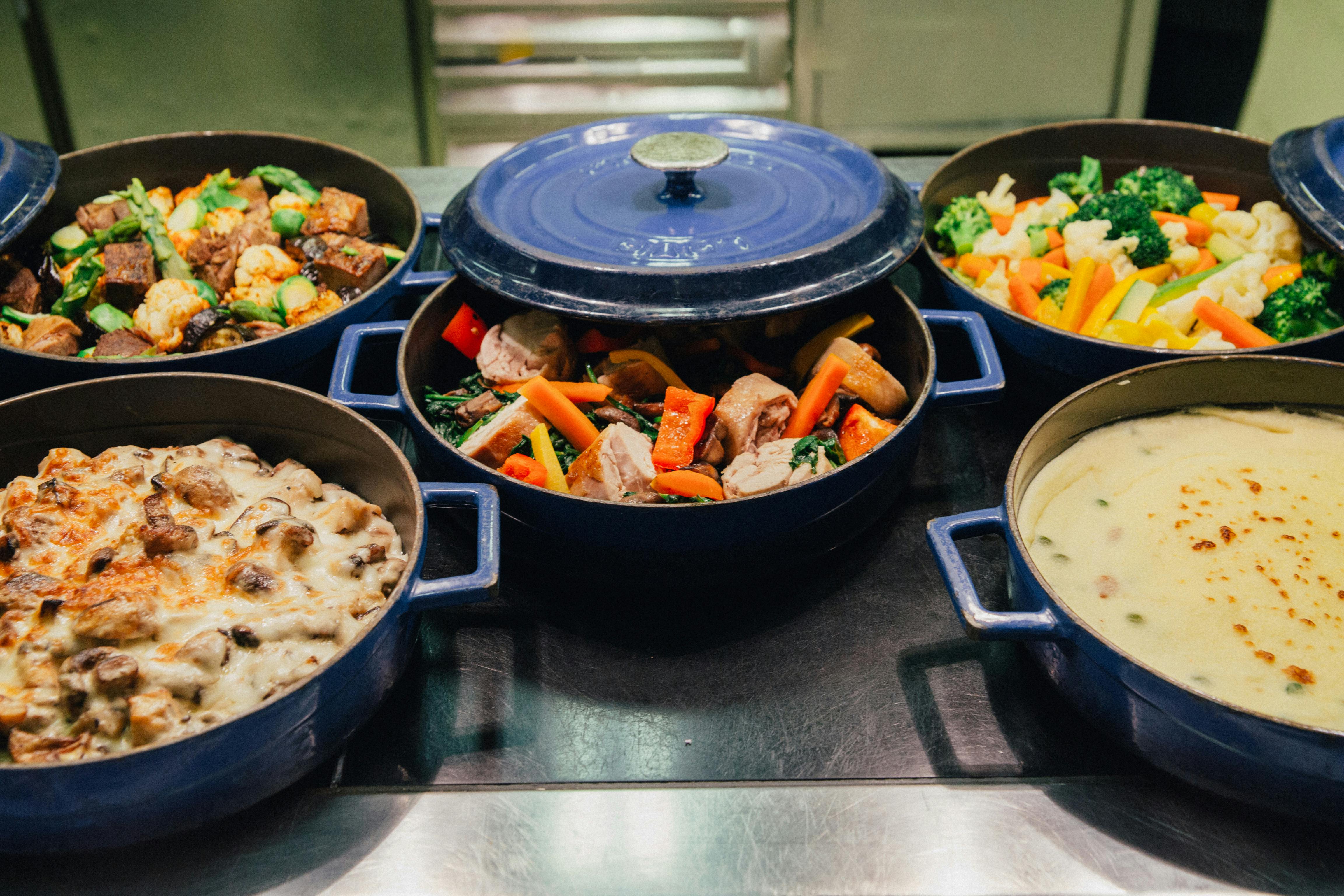
Apply Now


Top 5 Effective Ways to Optimize Protein to Calorie Ratio in 2025
Optimizing the protein to calorie ratio is essential for anyone seeking to enhance their fitness, manage weight, or simply eat healthier. A good balance of protein not only supports muscle growth but also plays a critical role in weight management and overall wellness. Understanding how to calculate your optimal protein calorie ratio can offer significant advantages, especially for athletes and fitness enthusiasts who have specific dietary demands. In 2025, the importance of protein optimization has taken center stage, with new research encouraging higher protein intake for effective weight management and muscle maintenance. The protein requirement for athletes is notably higher due to their increased activity levels, which makes selecting the right protein sources crucial. This article will explore five effective strategies to optimize your protein to calorie ratio, encouraging smart food choices that reinforce your health and performance goals without excessive calorie intake. By implementing these strategies, you'll not only gain insights into calculating your protein intake but also discover various healthy protein options and meal prep ideas to keep your nutrition on track. Here’s a roadmap of what you'll learn: - The role of protein in your diet. - How to calculate your protein needs accurately. - Optimal protein sources and their benefits. - Meal planning techniques to enhance protein intake. - Insights on protein supplementation and its impact on muscle recovery. By the end, you'll have a clearer understanding of the protein calorie benefits, enabling you to create a balanced dietary protein plan that aligns with your fitness goals.Understanding the Role of Protein in Your Diet
Protein is one of three primary macronutrients that our bodies require, alongside carbohydrates and fats. It plays a vital role in a variety of bodily functions, including building and repairing tissues, making enzymes and hormones, and supporting immune function. The significance of protein becomes even more pronounced when discussing muscle building and weight loss. The protein to calorie ratio is crucial because it helps gauge how effectively you're fueling your body. By focusing on the quality of protein in relation to calorie intake, you can enjoy meals that promote satiety, manage hunger levels, and provide the necessary nutrients to achieve fitness goals. When evaluating your protein options, lean protein choices such as fish, poultry, legumes, and low-fat dairy can help maintain a favorable protein to calorie ratio. In a world where high-calorie processed foods are prevalent, identifying **low-calorie protein foods** becomes essential. These foods not only help in managing calorie intake but are also known to assist in maintaining muscle mass during weight loss. Incorporating **high protein low calorie meals** into your diet is an effective way to ensure you're receiving sufficient protein without overloading on calories. This leads us toward understanding how to calculate your daily protein needs.Calculating Your Daily Protein Needs
To optimize your protein to calorie ratio effectively, one must first understand how to calculate daily protein intake accurately. The general recommendation for protein intake varies based on age, activity level, and fitness goals. A common guideline suggests consuming 0.8 grams of protein for every kilogram of body weight for adults. However, active individuals and athletes may require higher amounts, often recommended between 1.2 to 2.0 grams per kilogram of body weight depending on their training intensity. Using a protein to calorie ratio calculator can simplify this process. For example, if your daily calorie intake is set at 2000 calories and you aim for 30% of your calories to come from protein, you would divide 2000 by 4 (as there are 4 calories per gram of protein) to get a total of 500 calories from protein. Thus, your protein intake should be approximately 125 grams per day. It's important to also consider the timing of protein consumption throughout the day. Spacing protein intake across meals can enhance protein synthesis, which is essential for muscle recovery and growth. Thus, having a structured **protein meal prep** approach is beneficial for meeting your daily protein requirements effectively.Choosing Optimal Protein Sources
When optimizing for protein density, selecting the right protein sources is vital. **Healthy protein options** include lean meats, fish, eggs, dairy, legumes, and plant-based alternatives like tofu or tempeh. Understanding the protein quality is equally important; complete proteins contain all essential amino acids and are found in animal products, while many plant-based proteins may need to be combined to achieve a complete profile. Moreover, **protein in vegetarian diets** can also reach your needs by including a variety of sources such as quinoa, beans, and nuts. A well-rounded approach leads to a balanced macronutrient profile, which is essential for overall health. For flavorful meals, consider some **high protein recipes** that incorporate a mix of proteins, vegetables, and grains. Don't overlook the benefits of **protein bars calorie content** and **protein snacks options** as convenient ways to boost your protein intake throughout the day, especially when on-the-go. By honing in on the right protein-rich foods, you ensure that your calorie intake supports your fitness goals rather than hinders them.Implementing Meal Planning Techniques
With protein sources established, the next step is to effectively plan your meals. A well-structured meal plan that emphasizes protein can help achieve your **optimal caloric ratios for athletes**. Start by mapping out your weekly meals, ensuring each one includes a healthy serving of protein. One practical approach is batch cooking protein-rich meals during the weekend to streamline your weekly nutrition. Utilize options like grilled chicken, salmon, or plant proteins layered with vegetables. Preparing meals ahead of time ensures that you have access to **high protein low calorie meals** throughout the week, thus avoiding the temptation of quick yet nutritionally poor options. Additionally, consider incorporating a **protein shake calorie count** to track your liquid protein sources. Protein shakes or smoothies can serve as a convenient post-workout recovery solution or snack, especially when fortified with fruits and veggies. This method not only enhances your protein intake but also contributes to fulfilling your daily calorie limits. Meal variety also aids in maintaining dietary interest and ensuring a wide range of nutrients. Being adventurous with **protein alternatives in diets**, such as incorporating wild game or exotic plant-based proteins, can keep your meal planning exciting and beneficial.Understanding the Benefits of Protein Supplementation
For those struggling to meet their daily protein needs through food alone, **protein supplementation** can be a valuable addition to your diet. Protein powders or bars can provide a concentrated source of protein, aiding in muscle recovery and growth, especially post-workout. **Advantages of protein supplements** include their convenience, quick digestion, and versatility in meal planning. Consider incorporating protein shakes as part of your **protein diet plan**, blending them into smoothies or using them in baking as a flour substitute. Remember that while supplements can enhance your protein intake, they should complement rather than replace whole food sources. Monitoring your protein intake effectively requires awareness and strategic planning. Using a **protein foods list** can guide your grocery shopping and help maintain your protein balance in diet while eliminating guesswork.Evaluating and Adjusting Your Protein Intake
It's critical to consistently **track dietary protein** to ensure you are meeting your goals. Regular evaluation helps identify any shortcomings in your diet and paves the way for adjustments that can lead to improved performance and health outcomes. Utilize apps or journals to keep a daily record of your protein consumption. This practice can shed light on patterns or areas needing attention. Considering the impact of **protein and metabolism**, it's wise to assess how well your current protein intake supports your energy balance. If weight loss is a goal, having a higher protein intake is associated with increased satiety and reduced overall calorie consumption. This strategy helps those aiming for **protein and weight loss**. Additionally, recognizing the **importance of protein meals** for overall health can not be overstated. From elderly populations needing to preserve muscle mass to athletes requiring recovery, understanding the role of protein is key to optimizing health outcomes. Adapting your dietary patterns based on scientific evidence ensures you remain on track with your protein goals, offering significant health benefits like muscle retention, improved recovery, and sustained energy levels.Conclusion: Mastering Your Protein to Calorie Ratio
In conclusion, optimizing your protein to calorie ratio is a proactive approach to enhance your health, fitness, and overall well-being. By understanding the significance of protein, calculating your daily needs, and identifying optimal sources, you can create a sustainable protein-rich diet plan that aligns with your lifestyle and goals. Always remember the importance of protein in maintaining muscle mass, promoting recovery, and managing weight. With the guidance and strategies outlined in this article, you are well-equipped to make informed choices that elevate your health journey. By implementing meal planning techniques and utilizing supplementation wisely, achieving your optimal protein intake has never been more accessible. As we move further into 2025, staying on top of emerging trends and research in dietary protein will help you navigate your nutrition effectively. Embrace the power of protein and propel your fitness journey forward!
